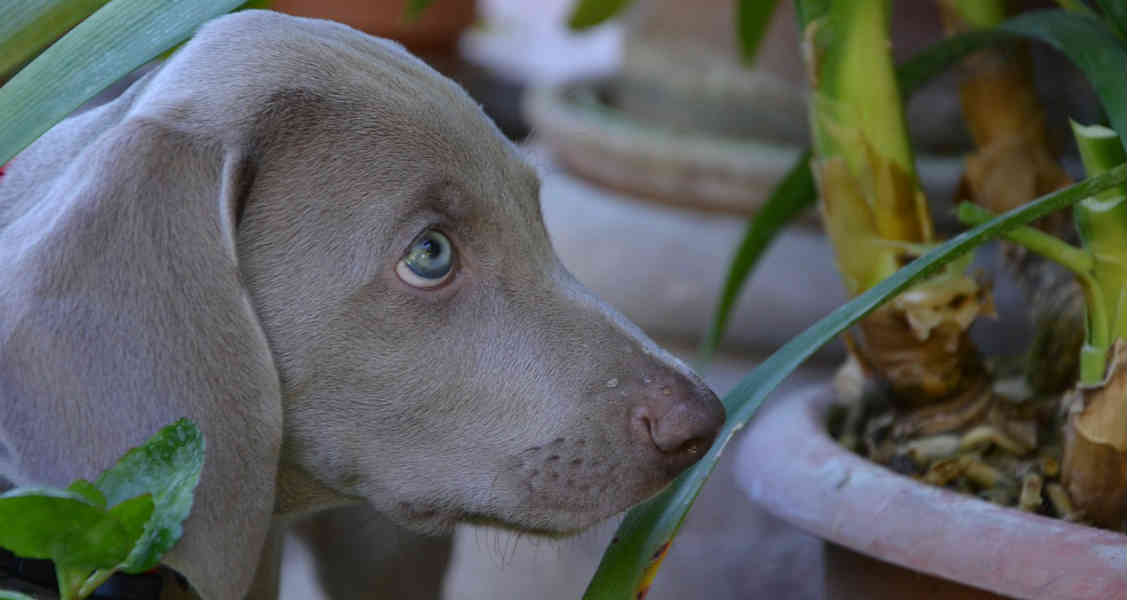18 Common Houseplants That Are Poisonous to Cats and Dogs
By: Jody Smith | Jul 22, 2019

You love your pets and go out of your way to keep your home comfortable and safe for them. But some houseplants are dangerous for your dogs and cats. Touching or eating some leaves can result in poisoning. Consuming some roots, blossoms and berries is toxic for your animals. Skin contact with some plants’ juice or sap can be damaging to your pets’ health. Do you know what plants to avoid?
Poisonous Plants to Cats and Dogs
1) Aloe Vera
Aloin is a toxic yellow material that can make your pet vomit, and give him reddish urine.
Saponins in aloe vera are chemical compounds which can cause mouth irritation and gastrointestinal issue. If leaves are eaten by dogs and cats resulting symptoms can include diarrhea, tremors and vomiting.
2) Arrowhead Plant
Dogs and cats who ingest any part of the arrowhead plant can experience skin irritation, upset stomach and vomiting.
3) Asparagus Fern
The asparagus fern also goes by the names emerald feather, emerald fern, lace fern, plumosa fern and sprengeri fern. Its toxic agent is a steroid called sapogenin. Eating the berries can cause a dog or cat to have abdominal pain, diarrhea and vomiting. Repeated exposure to this plant can result in allergic dermatitis.
4) Azalea
Grayantoxin is an element in the azalea which can disrupt normal function of nerves and muscles. Symptoms that can emerge if you cat or dog has been eating azaleas include diarrhea, excessive drooling, muscle weakness, pawing at the mouth and vomiting. Severe cases can result in sudden collapse and death.
5) Caladium
Caladium ingestion can cause your cat or dog to experience breathing problems, drooling, head shaking, nausea, staggering and vomiting.
6) Dieffenbachia
Dieffenbachia contains toxic oxalate crystals. Symptoms in affected pets include a burning sensation, diarrhea, difficulty swallowing, excessive salivation, mouth pain, numbness of the throat, oral irritation, throat swelling and vomiting.
7) Dracaena
Dracaena is also called corn plant. It contains saponin which can cause depression, loss of appetite, depression, excessive salivation and vomiting. A cat may have dilated pupils.
8) English Ivy
English ivy contains a triterpanoid saponin. Saponins are not always toxic but some can be quite dangerous. Intoxication symptoms include abdominal pain, diarrhea, excessive salivation, gasping, hyperactivity, staggering, tremors, weakness and vomiting. Irritation of the gastrointestinal tract and the mouth can occur.
9) Hydrangea
Hydrangeas contain a cyanogenic glycoside. Serious cyanide poisoning is unlikely but gastrointestinal distress including diarrhea and vomiting are possible.
10) Jade Plant
The jade plant is also called baby jade, dwarf rubber plant, jade tree, Chinese rubber plant and Japanese rubber plant. Eating part of this plant can result in reduced coordination, depression, slow heart rate and vomiting.
11) Lilies
Some are safe, but if you’re not sure what kind you have, don’t take chances with your pet’s health. Toxic lilies include Asian Lily, Calla lily, Day Lily Easter lily, Rubrum Lily and Tiger Lily. Cats are more at risk for serious kidney failure than dogs.
12) Mistletoe
Mistletoe contains toxalbumin and pharatoxin viscumin which can cause diarrhea and vomiting. In extreme cases, cardiac collapse can occur.
13) Oleander
Oleander is extremely toxic due to a cardiac glycoside. Cats and dogs who have eaten any part of this plant can experience arrhythmia, cold in the extremities, and vomiting.
14) Peace Lily
This is not a member of the Liliaceae family, so it’s not in the same category as those lilies previously mentioned. Symptoms include burning mouth, dehydration, diarrhea, excessive salivation, loss of appetite, vomiting, and in severe cases, kidney failure.
15) Philodendron
Philodendrons contain calcium oxalate crystals which are poisonous for cats and dogs. Symptoms include breathing problems, excessive drooling, pain, seizures, spasms, swelling and vomiting. Cats are especially at risk.
16) Poinsettia
Poinsettias contain an irritant sap which is moderately toxic. But if your dog or cat eats part of a poinsettia it can cause diarrhea, oral irritation and vomiting.
17) Pothos
Pothos is mildly toxic in small amounts but serious issues can cause breathing problems, choking, drooling, mouth and tongue swelling, and upset stomach. In severe cases, pothos can cause kidney failure and death.
18) Sago Palm
The Sago palm contains cycasin which affects the GI tract. Symptoms include bloody diarrhea and vomiting. Liver failure with bruising or yellowing of the skin and increased thirst, and even death can occur. The seeds are the most toxic component but all parts of this plant are poisonous.
Safe Plants for Cats and Dogs
1) Bamboo
Bamboo helps to purify the air in your home.
2) Boston Fern
This fern helps humidify the air.
3) Money Tree
The money tree, or money plant, will decrease formaldehyde and other toxins in the air.
4) Moth Orchids
The moth orchid reduces paint fumes as they purify your air.
5) Wax Plant
The wax plant reduces effects of gasoline, paint and smog.
Tradescantia zebrina is hard to pronounce, but easy to live with.
African violets, cast iron plants, palms and spider plants are all safe for you and your pets to have in your house. Fill your home with some of these beautiful plants and feel yourself relax in their presence.
What to Do If Your Pet is Poisoned
Do you think your pet may have been poisoned? Wipe its mouth with a cold, wet cloth, and call your vet right away. Even if you are in doubt, or see no symptoms, call anyway. Some symptoms may not appear until hours after contact.
Sources:
10 Toxic Houseplants That Are Dangerous for Children and Pets
https://dengarden.com/gardening/Dangerous-Beauties-Twenty-Toxic-Houseplants-to-Avoid-Around-Children-and-Pets
10 Common Houseplants That Can Hurt Your Pets
http://www.sparkpeople.com/resource/wellness_articles.asp?id=1955
10 Household Plants That Are Dangerous to Dogs and Cats
http://www.vetstreet.com/learn/10-household-plants-that-are-dangerous-to-dogs-and-cats
10 Purifying Houseplants that Are Safe for Cats and Dogs
http://www.wideopenpets.com/10-purifying-houseplants-that-are-safe-for-cats-and-dogs


Disclaimer: healthcareforpets.com and its team of veterinarians and clinicians do not endorse any products, services, or recommended advice. All advice presented by our veterinarians, clinicians, tools, resources, etc is not meant to replace a regular physical exam and consultation with your primary veterinarian or other clinicians. We always encourage you to seek medical advice from your regular veterinarian.

